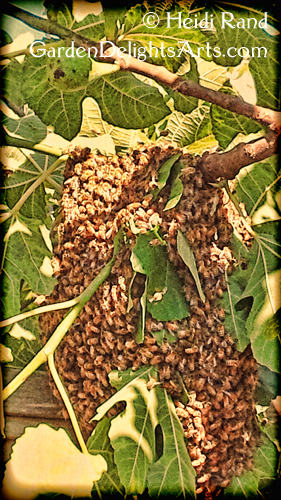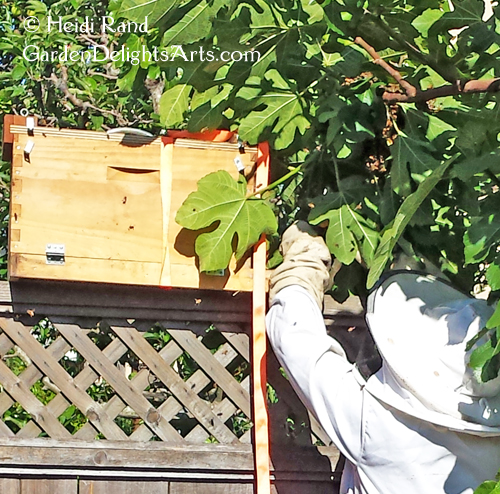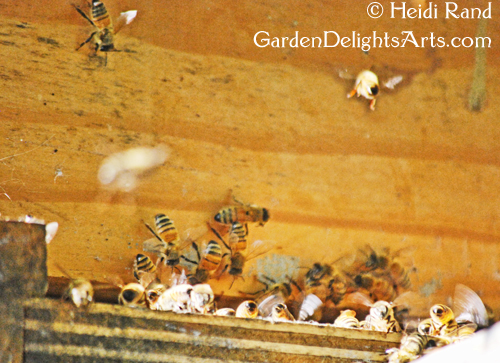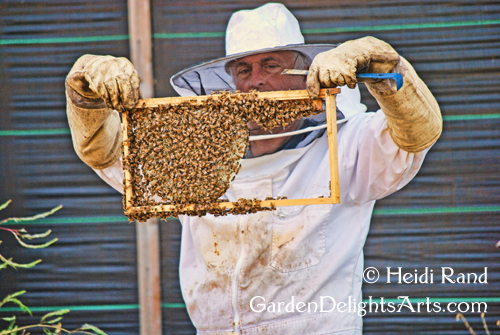In the middle of a jam-packed weekend George got the kind of call that makes him drop everything and jump into the car: there’s a swarm of bees in a tree near where you live, do you want to get it? 99% of the time the answer is Hell yeah! So equipped with beekeeper suit and nuc box, a’ gathering we went, George singing: “June June June, and bees are bustin’ out all over!” Oh, a nuc box is a half-sized beehive with 5 frames instead of the regular 10, set up to catch and transport bees.
Zowie! The largest swarm I’ve ever seen was settled in a fig tree in the back garden of a house the next town over from us.
George’s Plan: set the nuc box on top of the fence, and the leftover honey and wax on the frames in the box will lure the bees to move into their yummy new home.

And in they went.

At dusk, when all of the girls had found their way into the nuc box, George sealed it up and brought them to their new home in a friend’s large sunny garden. We checked on the hive yesterday and were overjoyed to see that these hard-working girls have in a week already built comb on 4 of the 5 frames!

Take a look at the magnificent queen!

George uploaded a short video he took of the bees marching into the nuc box.
This is my post about a swarm George caught earlier this year, using a bee vacuum.




 Since the bees will have their new home in Joan’s hive, we went to get one of her hive boxes with some frames that her old bees had built on.
Since the bees will have their new home in Joan’s hive, we went to get one of her hive boxes with some frames that her old bees had built on. The bees will be attracted to the leftover honey and wax on the frames, and migrate onto them from the vacuum. With the box on the roof, the bees that didn’t get vac’ed will sense the pheromones and re-join their queen and swarm. It’s a whole-day affair, mostly waiting around to make sure that as many bees as possible are gathered up. Any stragglers will likely go back to their old hive.
The bees will be attracted to the leftover honey and wax on the frames, and migrate onto them from the vacuum. With the box on the roof, the bees that didn’t get vac’ed will sense the pheromones and re-join their queen and swarm. It’s a whole-day affair, mostly waiting around to make sure that as many bees as possible are gathered up. Any stragglers will likely go back to their old hive.






 They bring the nectar back to the beehive, transform it into honey, and pack it into the wax honeycomb that they built.
They bring the nectar back to the beehive, transform it into honey, and pack it into the wax honeycomb that they built.
































